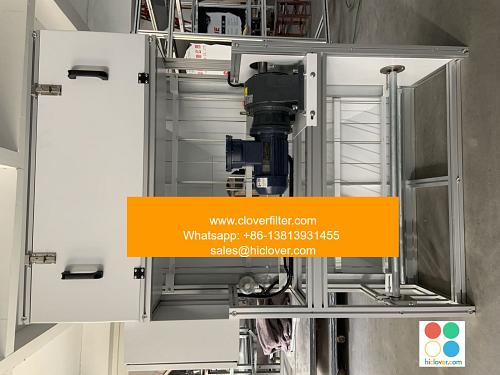DIY Air Filters: The Creative Community Behind Homemade Purification

The concept of DIY air filters has gained significant popularity in recent years, with the creative community playing a pivotal role in the development and implementation of homemade air purification systems. By utilizing a combination of air quality monitoring, indoor air pollution control, and heating, ventilation, and air conditioning (HVAC) systems, individuals are taking matters into their own hands to improve the indoor air quality (IAQ) in their homes, offices, and workshops.
The Importance of Air Purification and DIY Solutions
Air pollution is a growing concern worldwide, with both outdoor air pollution and indoor air pollution posing significant risks to human health. The World Health Organization (WHO) estimates that 9 out of 10 people worldwide breathe polluted air, resulting in 7 million premature deaths annually. In response to this crisis, the DIY community has stepped up to create innovative, cost-effective, and eco-friendly air purification solutions. By leveraging open-source designs, 3D printing technology, and recycled materials, individuals can create their own DIY air filters, tailored to their specific needs and environments.
Application Areas for DIY Air Filters
The applications of DIY air filters are diverse and widespread, ranging from residential air purification to commercial air cleaning and industrial air filtration. Some of the key areas where DIY air filters are making a significant impact include:
* Home air quality improvement: DIY air filters can help remove particulate matter (PM), volatile organic compounds (VOCs), and other pollutants from the air, creating a healthier environment for families and individuals.
* Workshop and garage air purification: DIY air filters can be used to remove harmful fumes and particles from workshops and garages, protecting workers and hobbyists from airborne contaminants.
* Office and commercial air cleaning: DIY air filters can be implemented in office buildings, restaurants, and other commercial spaces to improve indoor air quality and reduce the risk of airborne illnesses.
Key Technologies and Materials Used in DIY Air Filters
The development of DIY air filters relies on a range of technologies and materials, including:
* HEPA filters: High-efficiency particulate air (HEPA) filters are a popular choice for DIY air filters, due to their ability to capture 99.97% of particles as small as 0.3 microns.
* Activated carbon: Activated carbon is often used in DIY air filters to remove VOCs, odors, and other gases from the air.
* UV-C light technology: UV-C light is used in some DIY air filters to kill bacteria, viruses, and other microorganisms that can be present in the air.
* 3D printing and CNC machining: These technologies enable the creation of complex air filter designs and customized components for DIY air filters.
Challenges and Future Directions for DIY Air Filters
While DIY air filters offer a promising solution for improving indoor air quality, there are several challenges and limitations to consider. These include:
* Efficacy and testing: DIY air filters may not be as effective as commercial products, and testing and validation can be challenging.
* Cost and accessibility: While DIY air filters can be cost-effective, they may not be accessible to everyone, particularly in low-income communities.
* Regulation and standards: The development and implementation of DIY air filters may be subject to regulations and standards that vary by country and region.
In conclusion, the creative community behind DIY air filters is driving innovation in the field of homemade air purification. By leveraging open-source designs, 3D printing technology, and recycled materials, individuals can create effective, cost-efficient, and eco-friendly air purification solutions for a range of applications. As the DIY air filter community continues to grow and evolve, it is likely to play an increasingly important role in addressing the global air pollution crisis and promoting cleaner, healthier air for all. You’ve provided a prompt, but it’s empty. Could you please provide more context or information about what you would like to discuss or ask? I’ll do my best to assist you.

